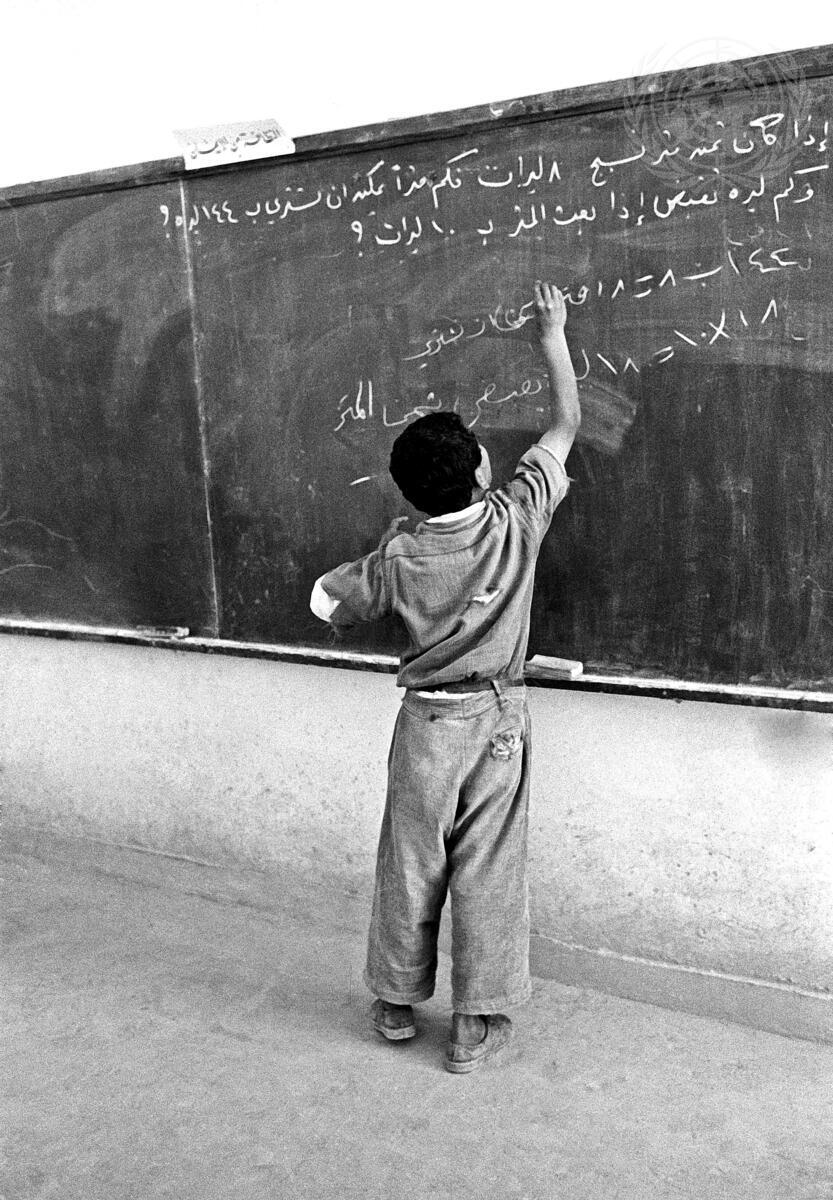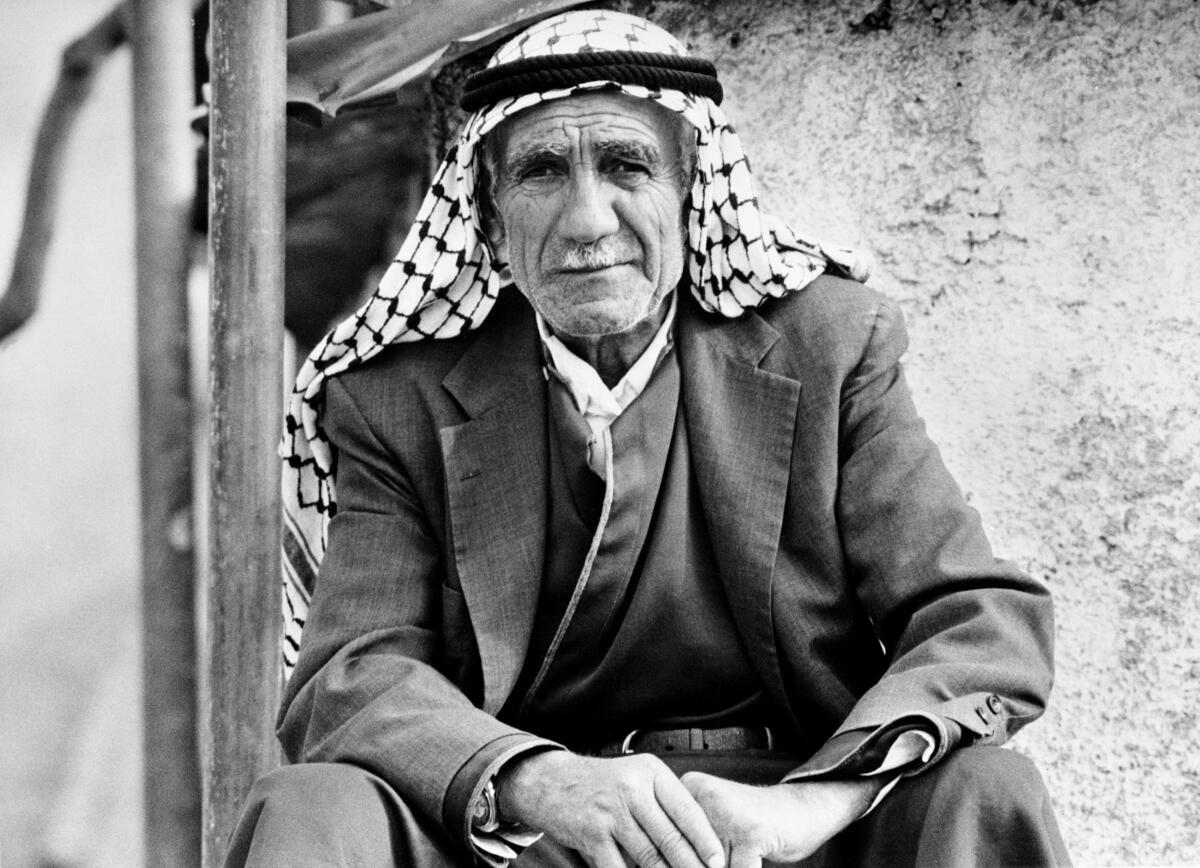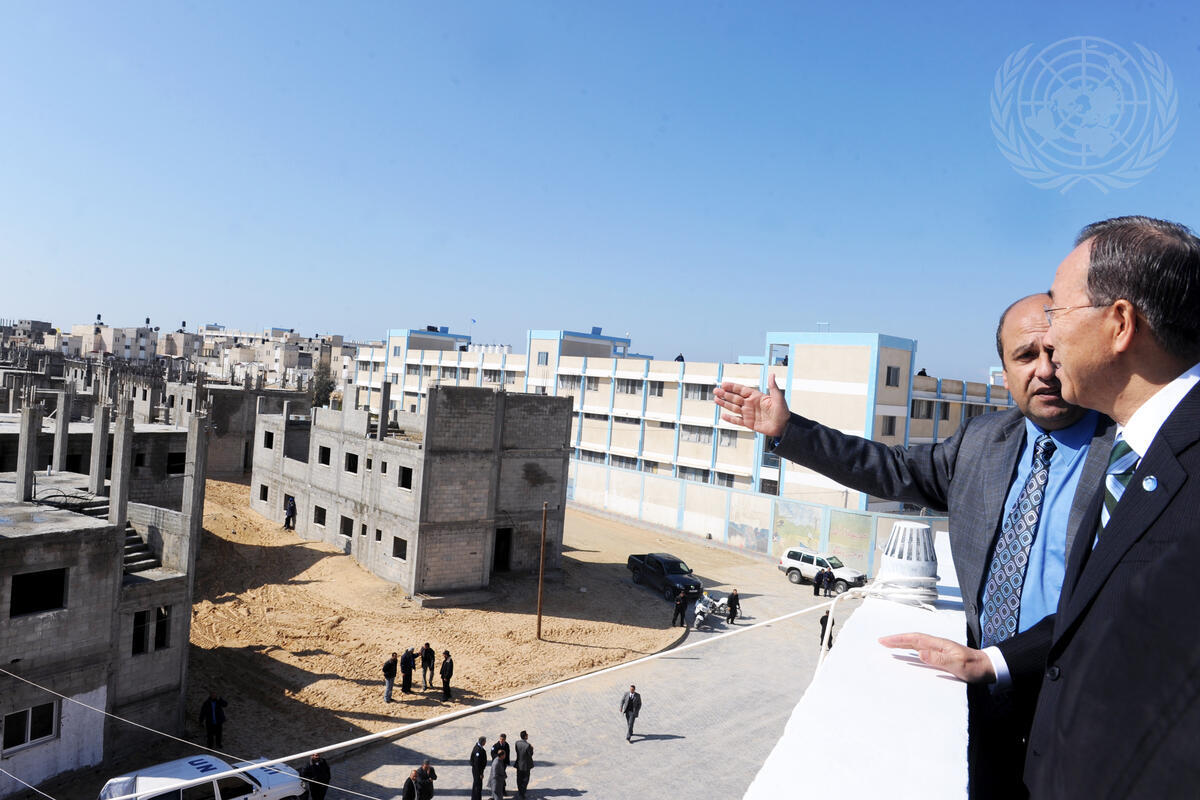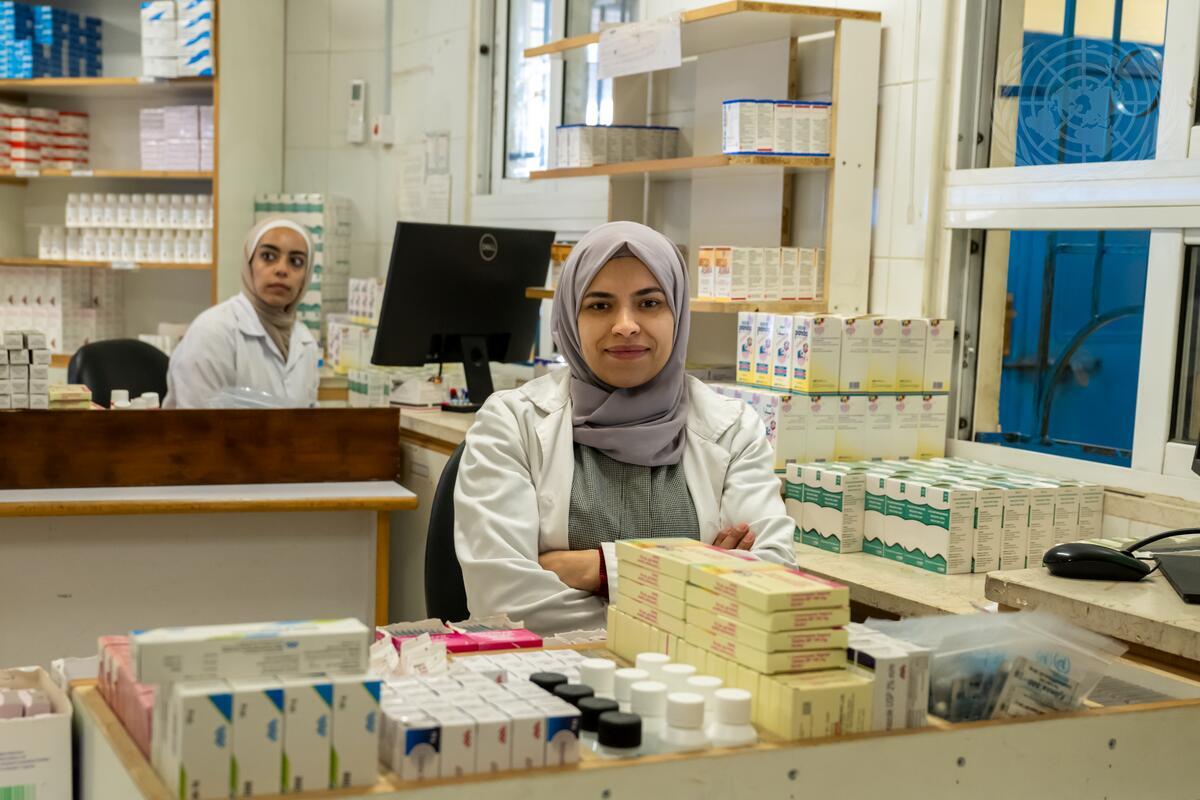The United Nations Relief and Works Agency for Palestine Refugees (UNRWA) was established by the General Assembly on 8 December 1949 to carry out direct relief and works programmes for Palestine refugees, following the 1948 war. The agency began operations on 1 May 1950.
UNRWA has contributed to the welfare and human development of four generations of Palestine refugees, defined as “persons whose normal place of residence was Palestine during the period 1 June 1946 to 15 May 1948, and who lost both home and means of livelihood as a result of the 1948 war”.
The agency’s services encompass education, health care, relief and social services, camp infrastructure and improvement, microfinance and emergency assistance, including in times of armed conflict.
When the UN agency began operations in 1950, it was responding to the needs of about 750,000 Palestine refugees. Today, some 5.9 million Palestine refugees in the occupied Palestinian territory, Jordan, Lebanon and Syria are eligible for UNRWA services.
The following images from UN Photo document the critical work the agency has been doing in the region for the last 74 years.


Left: A general view of the Nahr El Bared Camp, near Tripoli, one of the largest camps in Lebanon, where more than 6,000 refugees live in tents. Snow lies on the nearby mountains of Lebanon for four months of the year, and violent storms are frequent throughout the winter, but the refugees, coming mainly from the mountain regions of Palestine, bear the hardships of tent life with great courage and forbearance. UN Photo #UN7779198
Right: Palestinian refugees following the war in 1948. UN Photo #UN7498126

This picture, taken on a beach in Gaza, shortly after the arrival of the UN Emergency Force in the Gaza Strip, shows refugees unloading bags of flour that the United Nations Relief and Works Agency for Palestine refugees (UNRWA) shipped to Gaza on a small coastal freighter. UN Photo/JG # UN7708402


Left: A preliminary agreement was signed in March 1953 between UNRWA and the Jordan Government earmarking $40 million of UN self-support funds until the end of the year for the Yarmuk-Jordan Valley irrigation and hydro-electric project. David Bunger of the Water Resources Development Department is training a team of Jordanians and Palestine refugees. Here they are taking soil samples for testing in the Jordan Valley. UN Photo/UNRWA #UN7727261
Right: In 1954 UNRWA embarked on a project to anchor the sands and make at least one third of the clay plain beneath available to cultivation by the refugees. At the end of 1956, over 2,500,000 seedlings had been planted to protect 3,700 dunums of potentially cultivable land in the sand dunes area. Upper right: A convoy of camels bring the seedlings to an area being reclaimed. Seen in the foreground are some of the holes in which they will be planted. UN Photo/JG #UN7708429



Left: A schoolroom in UNRWA's Dekwaneh Camp in Lebanon. UN Photo/JG # UN7708378
Centre: Rainfall is slight in the Egyptian-held Gaza strip, and the absence of a roof does not deter 928 boys from attending classes in this thick-walled building in Rafah. These are second-year pupils in an elementary school. UN Photo # UN7727259
Right: Refugee boy solving an arithmetic problem in an elementary school in Nabatieh Camp. Education is a major part of UNRWA's programme in the Middle East camps. UN Photo/PB # UN7709698

Refugee children are seen here receiving physical therapy treatment at the Cartbawi Centre in Lebanon. In 1959-60 UNRWA spent nearly $100,000 for the complete education and training of 119 children with disabilities in 15 Middle East institutions. UN Photo/PB # UN7709929



UNRWA lays great emphasis on the development and expansion of training of refugees as skilled workers.
Left: Refugees are seen here at the plumbing workshop of the Kalandia Vocational Training Centre. UN Photo/PB # UN7708971
Centre: A group of Palestinian boys at the Koubbeh Centre in Lebanon.
UN Photo # UN7708486
Right: A UNRWA operated girls vocational training center offers courses such as dressmaking, hairdressing and business education, in addition to teacher training. A trainee in the home and institutional management course is seen here writing notes after a class in nutrition. UN Photo # UN7709701


As a result of the 1967 war between Israel and the Arab States, many thousands of people were left destitute. The United Nations and its agencies, including UNRWA, UNICEF, FAO through the World Food Programme, are providing food, clothing, shelter and medical care.
A man with visual disability is assisted in making the difficult crossing from the Israeli-occupied West bank of the Jordan River, across the King Hussein Bridge (formerly Allenby Bridge) into Jordan, by his daughter and another refugee. The bridge was blown up by the Jordanian Army during fighting between Israel and Jordan. UN Photo/BG # UN7714432 & # UN7714541


Left: A refugee in Alliance Camp, within the city of Damascus. UN Photo/JG #UN7710658
Right: A Palestine refugee in Amari refugee camp on the West Bank. UN Photo/PW # UN7718130

A refugee family makes the most of the limited space in their prefabricated hut in Baqa'a Camp near Amman. As a result of contributions from governments, voluntary organizations and individuals, prefabricated huts offering better protection against the elements than the canvas tents they replaced, have been set up in the emergency camps in East Jordan. UN Photo/DB # UN7711329


Left: Prefabricated huts offering better protection against the elements than the canvas tents they replaced have been set up in a number of refugee camps in East Jordan. Contributions for the shelters came from governments, voluntary organizations and individuals. UN Photo/DB # UN7711328
Right: Members of a Palestine Refugee family at the Baqa's camp near Amman, East Jordan. UN Photo/George Nehmeh # UN7715378


Left: An estimated 300,000 people have been displaced by the Israeli invasion of Southern Lebanon, some 200,000 to 230,000 Lebanese and 85,000 to 100,000 Palestinians; about 30,000 are children. In response to an appeal made by the Lebanese Government, assistance is being provided by the UN High Commissioner for Refugees (UNHCR), the UN Relief and Works Agency for Palestine Refugees in the Near East (UNRWA), and the UN Children's Fund (UNICEF). Lebanese refugees returning to their homes in the Israeli held town of Abaseeyeh which was destroyed during the Israeli invasion of Southern Lebanon in 1978. UN Photo/John Isaac # UN7726830
Right: An elderly Palestine refugee who lost his family at the Shatila camp massacre in Beirut in September 1982. UN Photo/UNRWA # UN7715375

Fishing and fishing-related activities have traditionally supported the livelihoods of thousands of families across the Gaza Strip. UNRWA has documented the challenges that fishermen in Gaza face due to Israeli restrictions on fishing and the blockade on the Gaza Strip. Palestinian fishermen collect their nets on the Gaza shore. UN Photo/Shareef Sarhan # UN7356766


Left: Children play on a water slide during UNRWA Summer Fun Weeks. Thanks to a donation from the Government of Finland, over 150,000 children in Gaza are participating in Summer Fun Weeks 2013, a two-week summer programme organised by UNRWA. The programme features activities designed to encourage creativity and a psychosocial well-being like football, kite flying, drawing, and traditional games. UN Photo/Shareef Sarhan # UN7300745
Right: A young Palestinian refugee receives a sack of flour at one of the food distribution operated by UNRWA in 2011. UN Photo/Shareef Sarhan # UN7356768



Left: Former Secretary-General Ban Ki-moon looks out over the UN-funded housing project site at Khan Younis, Gaza, with Munir Manneh, Engineer with UNRWA. UN Photo/Shareef Sarhan # UN7356726
Centre: A view of UNRWA staff members in the pharmacy at the health centre in the Wihdat Camp for Palestine refugees in Amman, Jordan, on 25 March 2024. UN Photo/Mark Garten UN71031343
Right: Secretary-General António Guterres is photographed with students during a visit to a school run by UNRWA at Baqa’a Camp in Jordan in 2019. UN Photo # UN746367

A Palestinian man salvages items from the rubble of his home destroyed by Israeli strikes on a building in northern Gaza Strip in 2014. UN Photo/Shareef Sarhan #UN7256350
